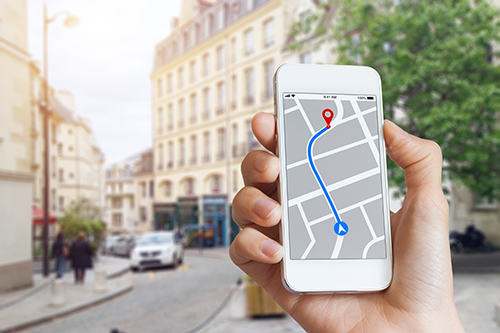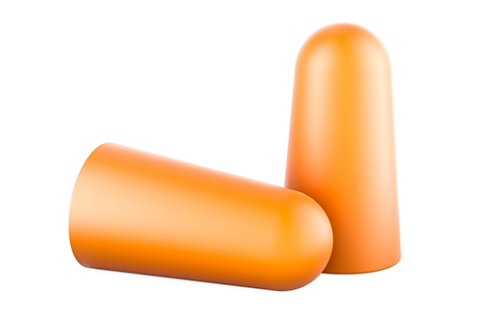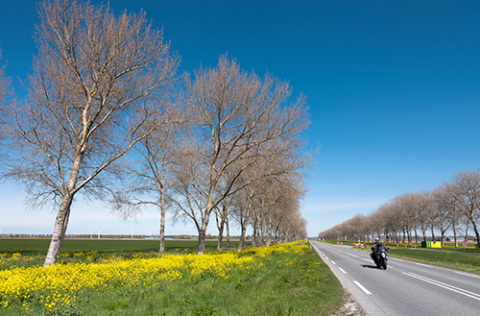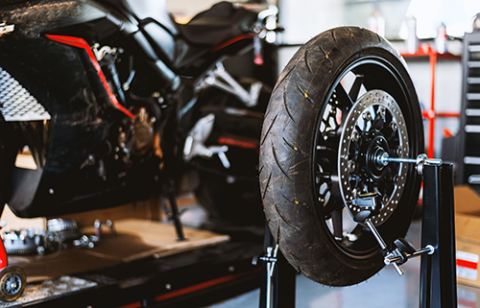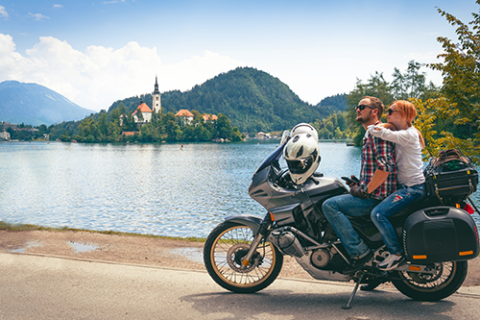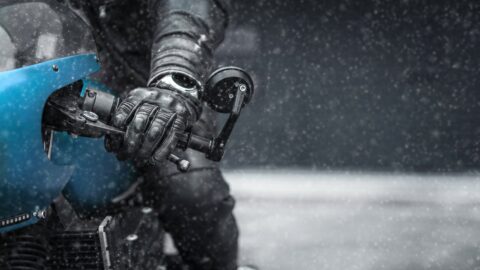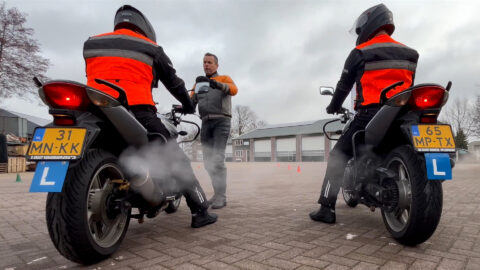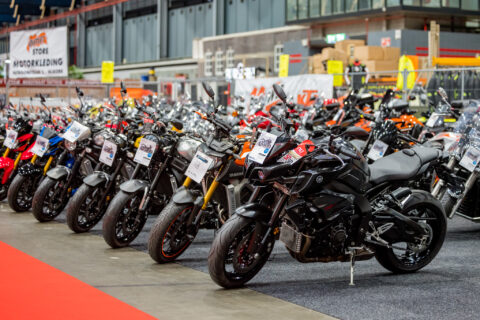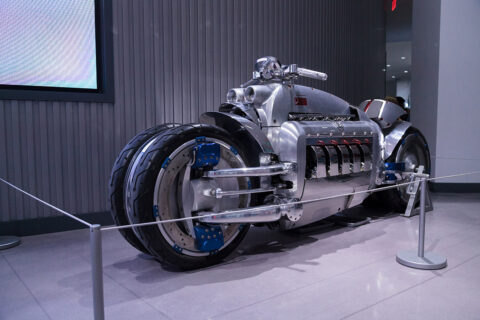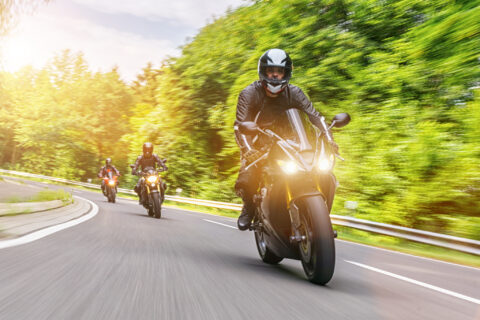Navigating on a motorcycle is a little different than navigating in a car. Whereas in the car you simply click your phone into a holder or use the built-in navigation system, motorcycling requires a different approach. Wind, rain, gloves and limited space make it a lot harder to follow a route on the road.
Therefore, motorcyclists are often faced with the choice: do you use your smartphone with a holder on the handlebar or do you go for a dedicated motorcycle navigation system? Both options have their advantages and disadvantages. In this article, we will help you make the best choice by comparing the two options. Which suits your riding style best? Let's dive in!
Why navigating on a motorcycle is different from navigating in a car
Navigating in the car is simple: you turn on your phone or navigation system, set the route, and you're done. On a motorcycle, it's a very different story. Motorcyclists face challenges that motorists hardly have to think about.
Weather influences
On the motorcycle, you are directly exposed to the weather. Rain, bright sun or temperature changes can make your smartphone screen less readable. A little rain on your phone screen can cause the touchscreen to become unresponsive.
Limited operation
Gloves and touchscreens don't mix well. While in the car you can easily tap the screen, on the motorcycle it's a different story. Special motorcycle navigation systems are often equipped with buttons or touchscreens that you can operate with gloves, while your smartphone is usually not designed for that.
Safety and focus on the road
As a motorcyclist, your full focus on the road is imperative. A quick tap on your phone is not only inconvenient, but downright dangerous. The position of the screen also plays a role: a navigation that hangs too low forces you to take your gaze off the road. This can lead to dangerous situations.
Mounting and visibility
Whereas in the car you just stick a holder on the dashboard, on the motorcycle you have to think carefully about where to place your navigation. Do you attach it to the handlebars, to the tank or to the mirror bar? In addition, you need to make sure you have a good viewing angle, because reflections from the sun can make your screen unreadable.
These factors make it clear that navigating on a motorcycle has very different requirements than in a car. A robust solution is therefore not a luxury, but a must. This brings us to the two main choices: the smartphone or a dedicated motorcycle navigation system.
The options: smartphone or motorcycle navigation system
Navigating with a smartphone: advantages and disadvantages
Benefits of navigating with a smartphone
- Always up-to-date maps: Apps like Google Maps, Waze or specialized motorcycle apps like Calimoto offer real-time traffic information, detours and updates.
- Low cost: You already have a smartphone, so all you need is a good smartphone holder for the bike.
- Flexibility in navigation apps: You can choose from several navigation apps that you can set up exactly to your preferences.
- User-friendly: Everyone knows how a smartphone works.
Disadvantages of navigating with a smartphone
- Weather sensitivity: Rain, bright sun or moisture can make the screen difficult to read.
- Vulnerability: Your phone may be overheated or damaged by rain.
- Battery life: Navigation eats battery, which can become a problem on the road.
- Limited operation with gloves: Most smartphones do not respond to touch with gloves.
Navigating with a motorcycle navigation system: advantages and disadvantages
Benefits of a motorcycle navigation system
- Weatherproof and robust: Waterproof, shockproof and resistant to dirt.
- Operation with gloves: Screens are specially designed for use with gloves.
- Always visible screen: Good readability, even in bright sunlight.
- Battery life or fixed power supply: Operates on battery or directly on the engine battery.
- Curvy and scenic routes: Easily plan beautiful routes with lots of turns.
Disadvantages of a motorcycle navigation system
- Higher purchase price: More expensive than a smartphone holder.
- Less user-friendly interface: The controls are sometimes less intuitive than a smartphone.
- Paid map updates: Updates to maps are sometimes not free.
What is the best choice for you?
How often and how far do you drive?
- Long rides? Choose a motorcycle navigation system.
- Short trips? Then a smartphone is often sufficient.
Do you ride through all kinds of weather or only in nice weather?
- Riding in all weather conditions? Go for a motorcycle navigation system.
- Only in nice weather? A smartphone with holder will do.
How important is ease of use?
- Want to easily set your route? Use a smartphone.
- Want to be able to make adjustments along the way? Use a motorcycle navigation system with glove controls.
What is your budget?
- Limited budget? Choose a smartphone holder.
- Are you ready to invest? Buy a motorcycle navigation system.
Helpful tips for navigating safely on the motorcycle
- Use a sturdy, waterproof holder: Provide a holder with anti-shock and waterproof features.
- Provide a constant power supply: Install a USB charger on your motorcycle.
- Set the route in advance: Avoid adjusting your route while driving.
- Use voice navigation via a Bluetooth headset: That's how you keep your eyes on the road.
- Avoid operation while driving: Stop in a safe place if you want to change something.
- Test your navigation beforehand: Check that everything works before you leave.
Conclusion
Navigating on the motorcycle is a lot more challenging than in the car. The big question is: do you choose a smartphone with holder or a motorcycle navigation system?
For short rides in nice weather, a smartphone with a sturdy, waterproof holder is a great choice. But for avid tourers who ride long distances regardless of the weather, a motorcycle navigation system is worth the investment.
Do you have enough with your smartphone with a holder, or do you want a fully integrated solution? Whatever you choose, make sure you keep navigating safely. Use a good holder, plan your route in advance and set everything up before you ride.
Whether you are looking for the shortest way home or want to discover the most beautiful winding route: with the right navigation, you will always arrive right.
